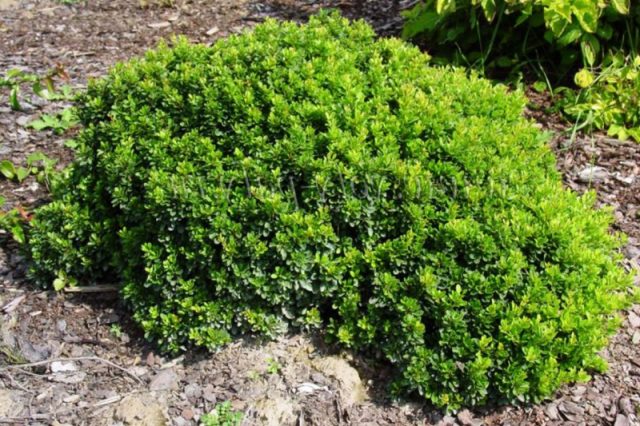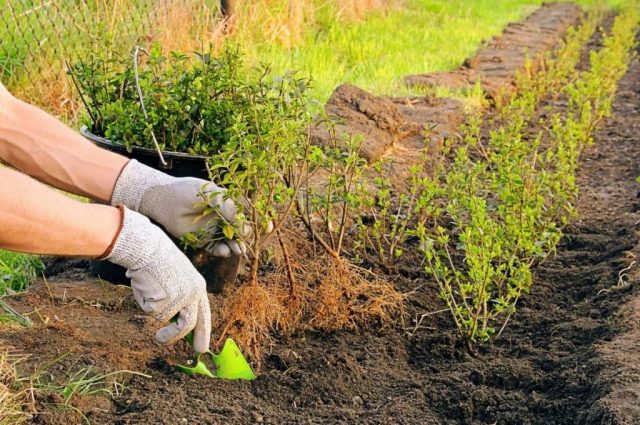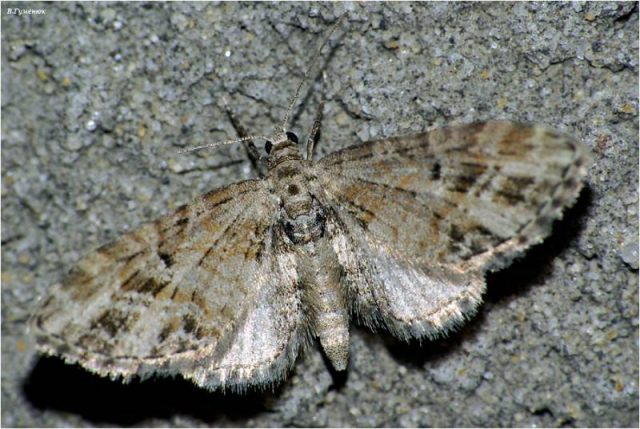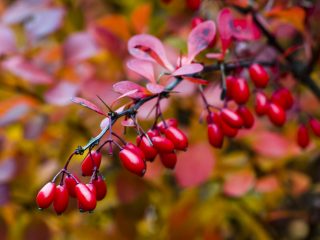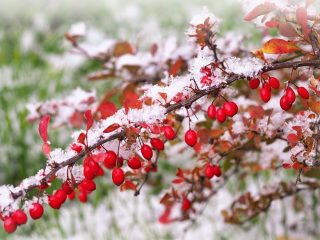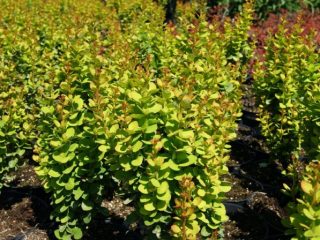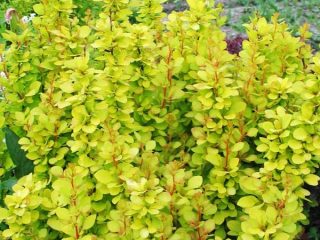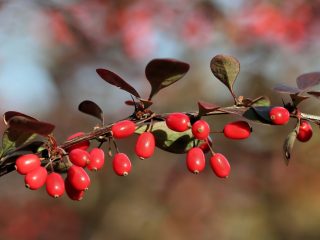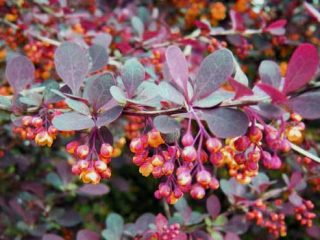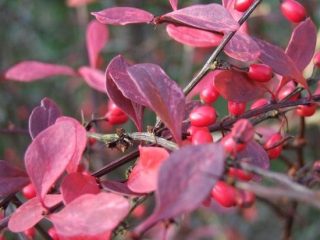Content
Barberry Thunberg Cobalt is an ornamental shrub of small, almost dwarf growth, used for landscaping the lower tier. It is used to create low hedges, borders and flower beds. The main feature of Thunberg Cobalt barberry is the high density and spreading nature of the bush.
Description of barberry Cobalt
Barberry Thunberg Cobalt was developed in the middle of the last century in Holland. This ornamental plant is quite compact in size, reaching a height of no more than 50 cm. In rare cases, its height reaches large values, however, one of its main characteristics, the density of the bush, is lost, and the Thunberg Cobalt barberry becomes less decorative.
Thunberg Cobalt barberry is grown exclusively as a bushy plant with emerald green foliage. Used as a border shrub. In some cases, Thunberg Cobalt barberry can be used as a single plant. Often a similar technique is used in the design of low flower beds or rock gardens.
The shoots of barberry Cobalt are short in length and densely strewn with leaves and small thorns.Cobalt leaves stick to the shoots and are located oppositely on them. The leaves can be up to 2 cm long, they are elongated and slightly pointed at the end. As they grow, this point gradually becomes rounded.
The flowering of Barberry Thunberg Cobalt begins in mid-May and lasts about two weeks. The flowers are bell-shaped and pale yellow or lemon in color. Their number is quite large: on one shoot there can be up to 2-3 dozen flowers.
Like most members of the Barberry family, Cobalt can change foliage color depending on the season. From the beginning of spring to mid-autumn, the color of the leaves has an emerald hue, changing with the onset of cold weather to orange-yellow. In the autumn months, the Thunberg Cobalt barberry is given additional decorative value by its bright red berries. Barberry Thunberg Cobalt also has a lot of fruits, since almost all flowers are set.
With the arrival of the first frosts, the green leaves, which have not had time to change color to orange, fall off. A photo of barberry Cobalt is presented below:
Barberry Thunberg Cobalt has a low growth rate and practically does not need formative pruning, but it tolerates it well, and its crown can be shaped at the owner’s request.
Barberry Thunberg is a winter-hardy and frost-resistant plant.
Planting and caring for barberry Thunberg Cobalt
Caring for Thunberg Cobalt barberry is simple and does not require any complex skills or abilities. Even inexperienced gardeners can grow this ornamental shrub.
The most important thing in growing it is to avoid excessive thickening. However, frequent pruning is also undesirable for the plant.Considering the low growth rate of barberry, it is optimal to form the crown of the plant once every 1-2 seasons.
Preparing seedlings and planting area
Despite the fact that the Thunberg barberry Cobalt is unpretentious, it will do best in a sunny area. Growing in partial shade is also allowed, but shade is extremely undesirable; in it, the growth rate of the shrub will be almost zero.
In addition, only in sunny areas will there be a change in leaf color for the autumn season. A plant in partial shade will likely have orange foliage in the fall only around the perimeter of the leaves.
Barberry is undemanding to the soil: its fertility or hardness is not important to it. For faster adaptation of a young plant, preference should be given to light soils with a medium or low degree of moisture.
Preliminary preparation of the site for planting involves digging holes about 40 cm deep and no more than 50 cm in diameter. Soil consisting of the following components should be laid at the bottom of the hole:
- garden soil - 2 parts;
- humus or compost – 1 part;
- sand - 1 part.
The height of the nutrient soil should be from 1/3 to half the depth of the hole.
It is recommended to lime acidic soils with ash or lime (in the amount of 200 g or 300 g per bush, respectively).
Any preliminary preparation of seedlings before planting is not required.
Landing rules
Planting should be done either in early autumn or late spring. It is desirable that the seedlings have no leaves, but have at least 3-4 vegetative buds on each shoot.
Plants are planted in such a way that the distances between bushes range from 50 to 80 cm. In this case, it is advisable to add complex fertilizer for ornamental plants, consisting of potassium, nitrogen and phosphorus, to holes on poor soils.
The seedling has a fairly developed root system, which must be carefully placed on the layer of fertile soil previously brought into the hole, the root layers straightened and carefully sprinkled with garden soil.
After which the soil is lightly compacted and watered.
Watering and fertilizing
Watering is carried out as the soil dries out. At the same time, you should not “flood” the plant too often - one abundant watering for 1-2 weeks is enough.
The first feeding is done in the second year after planting barberry Thunberg Cobalt. In the spring, nitrogen fertilizer is applied, consisting of 20 g of urea dissolved in 10 liters of water per bush. At the end of the season, mulch the bush with peat. This procedure is then repeated annually. Barberry does not require any other feeding.
Trimming
The main pruning that the plant needs is sanitary; it is carried out after wintering. In this case, diseased, old and dried shoots, as well as shoots growing “inside the bush” are removed as standard.
Formative pruning is relevant only for plants that serve as hedges. They are usually cut 2 times a season (beginning and end of summer). In other cases, formative pruning is performed no more often than once every 2 years.
Preparing for winter
Plants older than 3 years do not need to be prepared for winter, since they can tolerate frosts down to -35 °C without shelter. Young plants should be wrapped in polyethylene for the winter and sprinkled with a layer of foliage 20-30 cm high. And as soon as the first snow falls, sprinkle the top with snow.
However, in the spring, in order to avoid the plant becoming too cold, it is better to remove this “thermal protection” already at the first thaw.
Reproduction
Barberries reproduce in standard ways:
- dividing the bush;
- using cuttings;
- layering;
- offspring;
- seeds.
Unlike most perennials, Thunberg Cobalt barberry does not tolerate propagation by dividing the bush very well. Any damage to the rhizome that “goes wrong” will be fatal to the plant. Therefore, you should try to divide the rhizome along the thinnest roots, without touching the main root shoot.
Dividing methods by layering or cuttings are more preferable. On average, in the 5th year of life, barberry appears from 2 to 5 layerings, which are perfectly transplanted to a new place and begin to bloom after 1-2 seasons.
Cuttings are made from lignified shoots and grown according to standard methods using very liquid soil. In this case, it is advisable to treat them with a root formation stimulator, for example, epin.
Growing by seeds is also not a problem, since the seeds have very good germination. The main thing is that they undergo stratification. It is done as follows: seeds collected in the fall are stored until the beginning of April in the refrigerator at a temperature of no more than + 5 °C. After which they are planted without any additional treatment in a greenhouse or open ground.
Diseases and pests
The plant has increased resistance to many diseases characteristic of ornamental plants, however, there are several types of diseases and pests that can cause serious damage to the Thunberg Cobalt barberry.
The most serious disease threat is powdery mildew.This fungal disease on barberry behaves exactly the same as on any other plant: the symptoms manifest themselves in the form of a powdery coating, first on the lower part of the leaves, then on their entire surface, shoots and flowers.
Powdery mildew is combated using a sulfur-lime mixture and a solution of colloidal sulfur. In this case, the entire affected plants should be sprayed after 2 days on the third for 20 days until the symptoms of the disease completely disappear. In this case, as soon as powdery mildew is detected, the damaged shoots must be cut off to the very root and burned.
The main pest of barberry Cobalt is a highly specialized parasite - the barberry aphid. Its behavior is standard for all representatives of aphids: by sticking to the leaves and shoots, small insects suck out the juices of the plant, causing it to dry out. Detecting barberry aphids is quite problematic because they are extremely small in size.
If aphids are detected, you should either spray the plants affected by it with a solution of laundry soap (30 g of soap per 1 liter of water), or use a tobacco solution - 50 g of shag per 1 liter of water. Spraying is carried out daily until the pests completely disappear.
Another unpleasant pest that can affect barberry is the flower moth. To combat it, insecticides are used (for example, Chlorophos or Decis).
Conclusion
Barberry Thunberg Cobalt, due to its decorative properties, is widely used in the design of gardens, personal plots, parks and flower beds. This is an ideal plant to fill out the bottom layer of any landscape design. Growing barberry Cobalt is quite simple and can be recommended even for novice gardeners.

